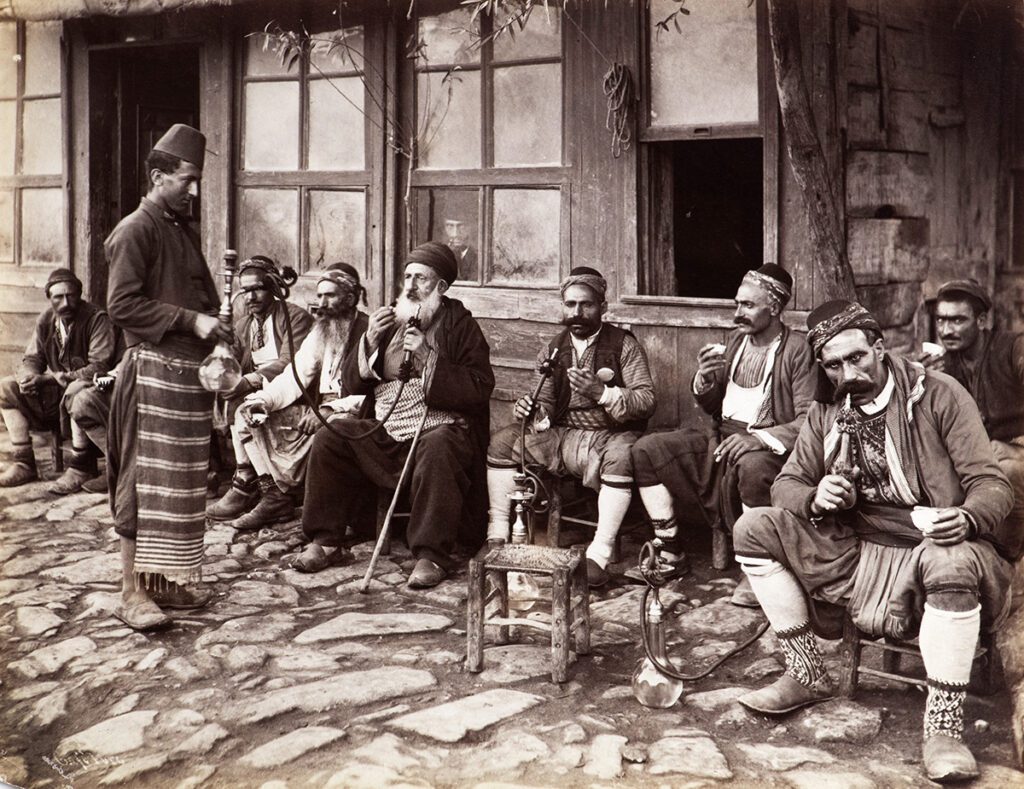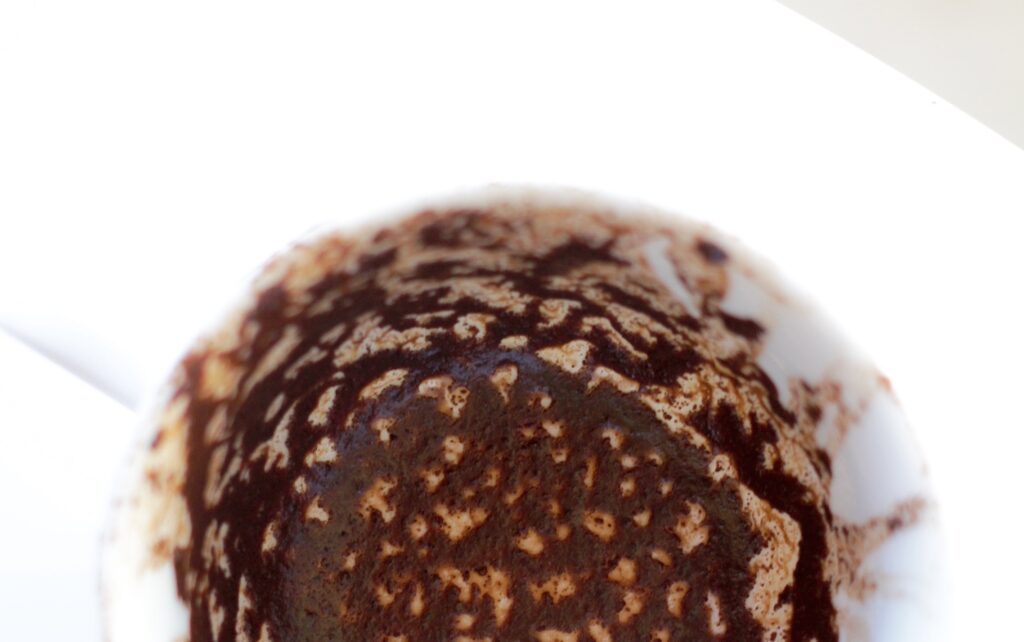Turkish Coffee Culture
Introduction
Turkish Coffee Culture : Turkish Coffee is the name given to a type of coffee whose preparation and brewing techniques were invented by the Turks. It has a unique taste, froth, aroma, brewing technique and presentation… in other words it has its own identity and tradition. The first coffee was made in the Arabian Peninsula by boiling coffee cherries. The new method invented by the Turks revealed coffee’s true flavor and peerless aroma. The Turks introduced coffee to Europe where for many years it was prepared and consumed as Turkish Coffee.
Turkish Coffee is made from high quality arabica coffee beans from Central and South America that are blended and carefully roasted, then very finely ground. The coffee is mixed with water and the desired amount of sugar and cooked in a “cezve”, or Turkish coffeepot. The coffee is served in small cups. The coffee must be left to stand for a short time after serving to allow the grounds to settle at the bottom of the cup.In contrast to other brewing methods, it is especially important that the coffee comes to a boil while brewing. The finely ground coffee is brought to a slow boil over low heat. Thanks to its strong body, delicious flavor and long-lasting aroma, a cup of steaming hot Turkish coffee is a guaranteed favorite with all coffee lovers.
UNESCO Intangible Cultural Heritage List
Turkish coffee’s special preparation, brewing techniques, and rich communal culture made it worthy of being inscribed in 2013 into UNESCO’s Intangible Cultural Heritage List. The tradition itself has also been recognized as a symbol of hospitality and friendship, with locals meeting at coffeehouses to converse over coffee, or coffee being offered to visitors as a welcoming gesture. The beverage’s importance in social occasions was also an important factor in its inscription, with coffee being served during holidays and engagement ceremonies.
History

Istanbul was introduced to coffee in 1543 by Özdemir Pasha, the Ottoman Governor of Yemen, who had grown to love the drink while stationed in that country. Prepared in a cezve or “güğüm” (copper vessel) using the technique invented by the Turks, the drink became known as Turkish Coffee. The Turkish public became acquainted with coffee through the establishment of coffeehouses; the first coffeehouse opened in the district of Tahtakale in 1554 and others rapidly cropped up all over the city. Coffeehouses and coffee culture soon became an integral part of Istanbul social culture; people came here throughout the day to read books and beautiful texts, play chess and backgammon and discuss poetry and literature. As coffee became a staple in palace cuisine as well as in private homes, its consumption increased dramatically. The raw beans were roasted in pans and then ground in mortars. The coffee was then brewed in cezves and served with great care to esteemed friends. Thanks to the efforts of merchants and travelers who passed through Istanbul, and even Ottoman ambassadors, Turkish Coffee’s renown soon spread to Europe and ultimately to the whole world. In 1871, Kurukahveci Mehmet Efendi was the first company to sell roasted and ground coffee to the public.

Characteristics of Turkish Coffee
Turkish Coffee…
- Is the world’s oldest coffee brewing method.
- Consists of foam, coffee and grounds.
- Remains on the palate longer than all other types of coffee thanks to its soft and velvety foam.
- Remains hot for a long time thanks to its delicious foam, which keeps its form for several minutes after the coffee is poured.
- Cools much more slowly than other varieties of coffee as it is served in thin cups, thus prolonging the drinking pleasure.
- Has an unforgettable flavor thanks to its thick, syrupy consistency that stimulates the taste buds.
- Is thicker, softer and more aromatic than other types of coffee.
- Is easily discernible from other types of coffee due to its unique aroma and foam.
- Is the only coffee that can be boiled.
- Is the only coffee that can be used to predict the future.
- Is unique in that its grounds are left in the cup: the coffee is not filtered or strained because the grounds settle at the bottom of the cup.
- Does not have to be sweetened after it has been poured as the sugar is added during preparation.
- Is healthy as the grounds that settle at the bottom of the cup are not drunk.
- Does not cause bloating, even if enjoyed often, as it is served in small portions.
- Contains less caffeine in one serving than other types of coffee.
- Is practical and economical because one only needs a cezve to brew it.
- To be enjoyed at its best, must be consumed immediately after roasting or else properly packaged in order to preserve its aroma.
The Secret Art of Preparing Turkish Coffee
We love coffee! Drinking coffee is a unique pleasure for Turks. A cup of Turkish coffee is endowed with a variety of important connotations for Turks: friendship, affection and sharing. This is best illustrated in the old saying: “A single cup of coffee can create a friendship that lasts for 40 years”. Turkish coffee is such an intrinsic part of Turkish culture that it has given its name to the word for breakfast, “kahvaltı”, which translates as “before coffee”, and is derived from the words “kahve” (coffee) and “altı” (before). Serving a cup of Turkish Coffee is also a way of sealing a friendship. The preparation and care taken by a host in serving Turkish Coffee to his guests is an important aspect of hospitality. In Turkey, it is traditional for a prospective bride to serve coffee to her suitor and his family when they come to ask for her hand in marriage. Accepting a cup of coffee is a source of pride to the person who offers it. This is illustrated in the Turkish expressions “his coffee can be drunk” and “I would drink a cup of your coffee”. Nothing compares to long, friendly conversation over a cup of frothy Turkish Coffee, followed by having your fortune told.

First, make sure you know how your guests want their coffee. Contrary to other coffee, you prepare Turkish coffee with the sugar already in it. You have several versions: without sugar, with very little sugar, medium sweet (1 teaspoons), and sweet (2 teaspoons). (For those wanting to order it in Turkey, the Turkish version sounds like this: şekersiz or sade, az şekerli, orta, and şekerli.) Secondly, you will need the right tools and accessories: a cezve, which is a particular pot with a wide bottom and usually made of copper, and of course, Turkish coffee cups. Keep all your ingredients and tools at hand. You will need Turkish coffee, which is much more finely ground than regular coffee, filtered water, and sugar. The rest is easy; just take it slow, and make your Turkish coffee with love.
- For each cup of coffee, take a heaping spoon of ground coffee (about 5gr) and put it in the cezve. If you need to prepare Turkish coffee with sugar, add the sugar as well.
- Measure the amount of water in the coffee cup you are going to use. Always use cold, filtered water and fill the cup. After that, add the water to the coffee in the cezve.
- Stir the mixture until combined.
- Slowly bring your Turkish coffee to a boil over medium heat.
- Stir gently now and then until your coffee develops a beautiful foamy layer on top.
- Slowly pour half a cup and put your cezve back onto the fire until the coffee comes to a boil again. Let it boil for about 15 seconds.
Fortune Telling

Love, success, money, fortune: the art of reading coffee grounds is as old as coffee itself. Coffee fortune telling was born out of Turkish Coffee and is an inseparable part of the pleasure and conversation associated with coffee. This ritual spread to Europe at the end of the 17th century when it became fashionable in Paris, from where it spread to Austria, Hungary and Germany. After the coffee is drunk the cup is placed upside down on its saucer. The person whose fortune is to be read says, “Let my fortune match my state”. After the cup has thoroughly cooled, the fortuneteller examines the patterns formed by the grounds. The aim is generally to impart good news and to promote a positive outlook on the future.
- always use a plain white cup; it makes it easier to read the grounds
- drink your coffee, but not all the way to the bottom where the grounds are
- make a wish
- put your saucer on top of the coffee cup and make sure it is well-sealed
- close your eyes and hold it in front of you,
- make three swirling moves to spread the sediment around the entire cup
- turn your coffee cup upside down on the saucer
- give it to the fortune teller
Never (!) read your coffee grounds yourself and never let more than one person interpret them. The person reading the coffee grounds will leave the cup for about 5 minutes until the sediments have set and made their patterns onto the cup. Reading coffee grounds is not only about the challenge of finding the symbols in the sediments, but more advanced readers also know how to interpret them depending on where they are in the cup.










